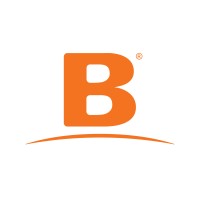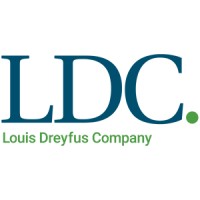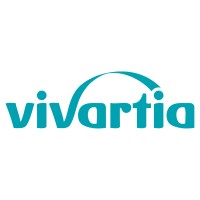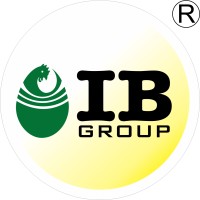
PT SMART Tbk Company Cyber Security Posture
smart-tbk.comPT SMART Tbk (SMART) adalah salah satu perusahaan publik produk konsumen berbasis kelapa sawit yang terintegrasi dan terkemuka di Indonesia yang berkomitmen pada produksi minyak sawit yang berkelanjutan. Perkebunan kelapa sawit SMART mencakup 137,000 hektar (termasuk plasma). Aktivitas utama kami adalah penanaman dan pemanenan pohon kelapa sawit, pengolahan tandan buah segar (TBS) menjadi minyak sawit (CPO) dan inti sawit, dan pemrosesan CPO menjadi produk bernilai tambah seperti minyak goreng, margarin, shortening, biodiesel dan oleokimia, serta perdagangan produk berbasis kelapa sawit ke seluruh dunia. SMART juga mengoperasikan 16 pabrik kelapa sawit, 4 pabrik pengolahan inti sawit dan 4 pabrik rafinasi di Indonesia. Selain minyak curah dan industri, produk turunan SMART juga dipasarkan dengan berbagai merek seperti Filma dan Kunci Mas. Saat ini, merek-merek tersebut diakui kualitasnya dan memiliki pangsa pasar yang signifikan di segmennya masing-masing di Indonesia. Didirikan tahun 1962, SMART tercatat sahamnya di Bursa Efek Indonesia sejak tahun 1992 dan berkantor pusat di Jakarta. Sebagai anak perusahaan dari Golden Agri-Resources (GAR), SMART juga mengelola kegiatan usaha di sektor oleokimia, dibawah Sinar Mas Oleochemical, SMART Research Institute (SMARTRI), dan SMART Biotechnology Centre sebagai bagian dari kegiatan operasionalnya.
PST Company Details
pt-smart-tbk
10,001+ employees
850841
311
Food and Beverage Manufacturing
smart-tbk.com
Scan still pending
PT _1832841
In-progress
Between 900 and 1000
This score is AI-generated and less favored by cyber insurers, who prefer the TPRM score.
 PST Global Score
PST Global Score.png)

PT SMART Tbk Company Scoring based on AI Models
| Model Name | Date | Description | Current Score Difference | Score |
|---|---|---|---|---|
| AVERAGE-Industry | 03-12-2025 | This score represents the average cybersecurity rating of companies already scanned within the same industry. It provides a benchmark to compare an individual company's security posture against its industry peers. | N/A | Between 900 and 1000 |
PT SMART Tbk Company Cyber Security News & History
| Entity | Type | Severity | Impact | Seen | Url ID | Details | View |
|---|
PT SMART Tbk Company Subsidiaries

PT SMART Tbk (SMART) adalah salah satu perusahaan publik produk konsumen berbasis kelapa sawit yang terintegrasi dan terkemuka di Indonesia yang berkomitmen pada produksi minyak sawit yang berkelanjutan. Perkebunan kelapa sawit SMART mencakup 137,000 hektar (termasuk plasma). Aktivitas utama kami adalah penanaman dan pemanenan pohon kelapa sawit, pengolahan tandan buah segar (TBS) menjadi minyak sawit (CPO) dan inti sawit, dan pemrosesan CPO menjadi produk bernilai tambah seperti minyak goreng, margarin, shortening, biodiesel dan oleokimia, serta perdagangan produk berbasis kelapa sawit ke seluruh dunia. SMART juga mengoperasikan 16 pabrik kelapa sawit, 4 pabrik pengolahan inti sawit dan 4 pabrik rafinasi di Indonesia. Selain minyak curah dan industri, produk turunan SMART juga dipasarkan dengan berbagai merek seperti Filma dan Kunci Mas. Saat ini, merek-merek tersebut diakui kualitasnya dan memiliki pangsa pasar yang signifikan di segmennya masing-masing di Indonesia. Didirikan tahun 1962, SMART tercatat sahamnya di Bursa Efek Indonesia sejak tahun 1992 dan berkantor pusat di Jakarta. Sebagai anak perusahaan dari Golden Agri-Resources (GAR), SMART juga mengelola kegiatan usaha di sektor oleokimia, dibawah Sinar Mas Oleochemical, SMART Research Institute (SMARTRI), dan SMART Biotechnology Centre sebagai bagian dari kegiatan operasionalnya.
Access Data Using Our API

Get company history
.png)
PST Cyber Security News
Jakarta gears up for improved Cyber Security at Trescon’s WCSS
The constant evolution of cyber security attacks has made organizations worldwide vulnerable to cyber threats such as malware, ransomware, and data breaches, ...
Axiata Group, Sinar Mas to merge units in Indonesia, creating a RM12.4bil company
"XL Axiata will serve as the surviving entity while Smartfren and SmartTel will dissolve by operation of law upon merger completion and become ...
Mandiri, BTN and BRI step up cybersecurity game with bigger IT Capex in 2023
State-owned PT Bank Mandiri Tbk plans to develop digital services to strengthen bank digitalization. Mandiri took half of the total capital ...

PST Similar Companies

George Weston Bakeries
George Weston Bakeries is now part of Bimbo Bakeries USA. We are a 4 billion dollar fresh baked goods company with such brands as Arnold, Thomas, Entenmann's, Tia Rosa, Bimbo, Freihofer's, Stroehmann, Marinela, Boboli, Mrs. Bairds and more. We are the company with the brands you and your family h

Grupo Bachoco
Industrias Bachoco es líder en la industria avícola en México y una de las empresas avícolas más grandes a nivel mundial. La Compañía se fundó en 1952, e inició su cotización en la Bolsa Mexicana de Valores y el New York Exchange en 1997. Las oficinas Corporativas se ubican en Celaya, Guan

Louis Dreyfus Company
Louis Dreyfus Company is a leading merchant and processor of agricultural goods. We leverage our global reach and extensive asset network to serve our customers and consumers around the world, delivering the right products to the right location, at the right time – safely, responsibly and reliably.

Vivartia
Η Vivartia, η μεγαλύτερη εταιρία τροφίμων στην ελληνική αγορά, διαθέτει κορυφαία προϊόντα που καλύπτουν τις διατροφικές ανάγκες και συνήθειες εκατομμυρίων καταναλωτώ

ABIS Exports India Private Limited. IB Group
IB Group - India's largest protein-centric Agri-biz conglomerate with a turnover of INR 9700 Crore in FY 2023 headquartered in Chhattisgarh's Rajnandgaon district. The company has been synonymous with excellence and poultry since 1985 and is the first Poultry Company to be certified as a Great Place

Agrosuper
We are a company born in the O’Higgins Region that produces chicken, pork, turkey, and processed foods. Our production process is fully integrated and includes everything from animal feed manufacturing, breeding sectors, processing plants, distribution centers, and commercial offices, allowing us

Frequently Asked Questions
Explore insights on cybersecurity incidents, risk posture, and Rankiteo's assessments.
PST CyberSecurity History Information
How many cyber incidents has PST faced?
Total Incidents: According to Rankiteo, PST has faced 0 incidents in the past.
What types of cybersecurity incidents have occurred at PST?
Incident Types: The types of cybersecurity incidents that have occurred include .
Incident Details
What are the most common types of attacks the company has faced?
Additional Questions
What Do We Measure?
















Every week, Rankiteo analyzes billions of signals to give organizations a sharper, faster view of emerging risks. With deeper, more actionable intelligence at their fingertips, security teams can outpace threat actors, respond instantly to Zero-Day attacks, and dramatically shrink their risk exposure window.
These are some of the factors we use to calculate the overall score:
Identify exposed access points, detect misconfigured SSL certificates, and uncover vulnerabilities across the network infrastructure.
Gain visibility into the software components used within an organization to detect vulnerabilities, manage risk, and ensure supply chain security.
Monitor and manage all IT assets and their configurations to ensure accurate, real-time visibility across the company's technology environment.
Leverage real-time insights on active threats, malware campaigns, and emerging vulnerabilities to proactively defend against evolving cyberattacks.




